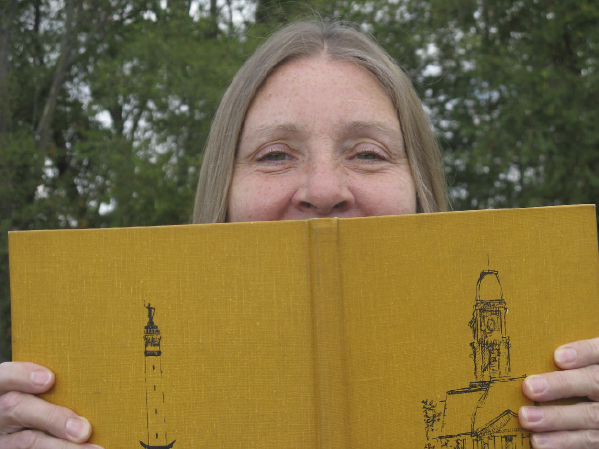A Visit from ‘The Plumed Knight’

Noblesville has been visited by several past, future and incumbent United States Presidents over the years, but the biggest political rally ever held here might well have been in honor of a man who lost a presidential election.
James G. Blaine, a Republican from Maine, lost the 1884 presidential race to Grover Cleveland, but from the press he received when he made a campaign stop here on Oct. 21, 1884, you’d have thought he’d already been elected.
At least that’s how the October 24 Republican Ledger’s account of “The Plumed Knight’s” visit reads. (Blaine received the nickname, “The Plumed Knight,” during his first run at the presidency in 1876.)
By contrast, the coverage in the Noblesville Independent, the Democrat newspaper, boiled down to this: “Blaine made a nice speech, but there was nothing to it — five minutes long.”
The Independent estimated attendance at the rally to be between 8,000 and 10,000, while the Ledger claimed Blaine was greeted by “Twenty Thousand Wildly Enthusiastic People.”
I suspect the truth lies somewhere between the two estimates. Whatever the true number, that’s a pretty big turnout for a county with a population of just under 25,000 in the 1880 census.
Once you get past the Ledger’s obvious bias, the newspaper does provide a detailed and interesting record of Blaine’s visit.
According to the Ledger, thousands of people poured in from the countryside to witness “The Proudest and Greatest Day in the History of the County,” making the streets around the courthouse square nearly impassible.
Republican businesses and homes were said to be festooned with “scores of flags and yards upon yards of bunting.” The speaker’s stand that awaited Blaine was similarly tricked out with flags, bunting and evergreens.
Adams, Wayne and Fall Creek Townships all brought “credible delegations,” headed by decorated wagons and bands, but the largest organized group came from Jackson Township. This included the Cicero Glee Club, which entertained the crowd with selections of “Republican music.”
While the throng waited for Blaine’s train to arrive from Tipton, William Cumback, Indiana’s Lieutenant Governor from 1869 to 1873, and famed African American statesman and orator Frederick Douglass got them warmed up.
This was Douglass’ third visit to Noblesville. Although his voice betrayed the toll the campaign was taking on him, he still managed to talk for almost an hour and a half in “his inimitable and powerful manner.”
When Blaine’s train finally chugged into the city a little after 3 p.m., members of his entourage initially thought all the spectators had gathered west of the tracks and wanted Blaine to address them from the rear platform of his railcar.
Local politician Joseph Gray quickly set them straight, pointing out the huge mass of people on the OTHER side of the train.
Blaine was then escorted through the crowd to the stand on the southeast corner of the courthouse lawn, where he joined Cumback and Douglass.
Also on the platform were Senator (and future President) Benjamin Harrison, Congressman (and future President) William McKinley, railroad executive E. W. McKenna, some state and local politicians, and members of the press.
After delivering a short speech to deafening applause, Blaine returned to the train and resumed his journey to Indianapolis, with only a short stop at Fisher’s Station to shake a few hands.
To the Ledger’s credit, the newspaper did acknowledge that not everyone in Noblesville was behind Blaine. It was noted that a sign on one house read: “The better half of this house is for St. John, the voting half is for Blaine.”
(Former Kansas Governor John St. John was the Prohibition Party candidate for U. S. President.)
Blaine was probably lucky the “better half” and her friends didn’t get to vote until 1920.
Paula Dunn’s From Time to Thyme column appears on Wednesdays in The Times. Contact her at younggardenerfriend@gmail.com
